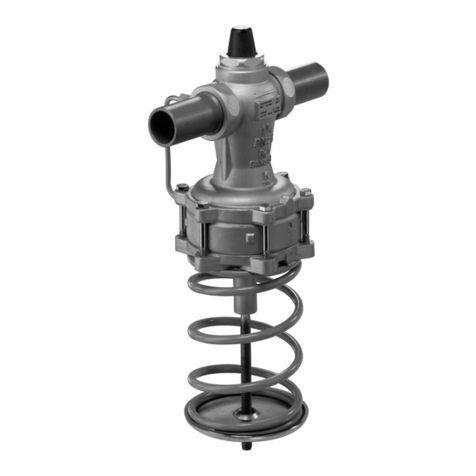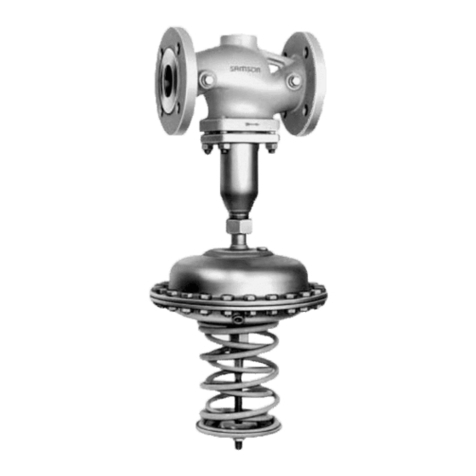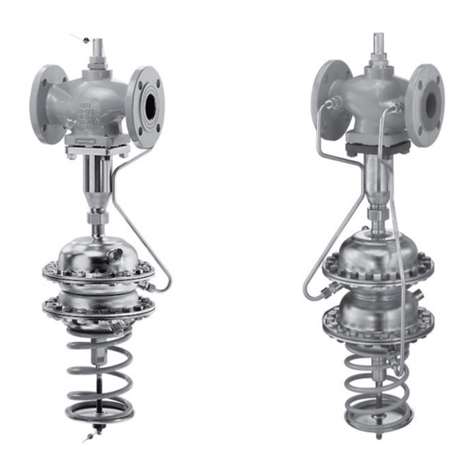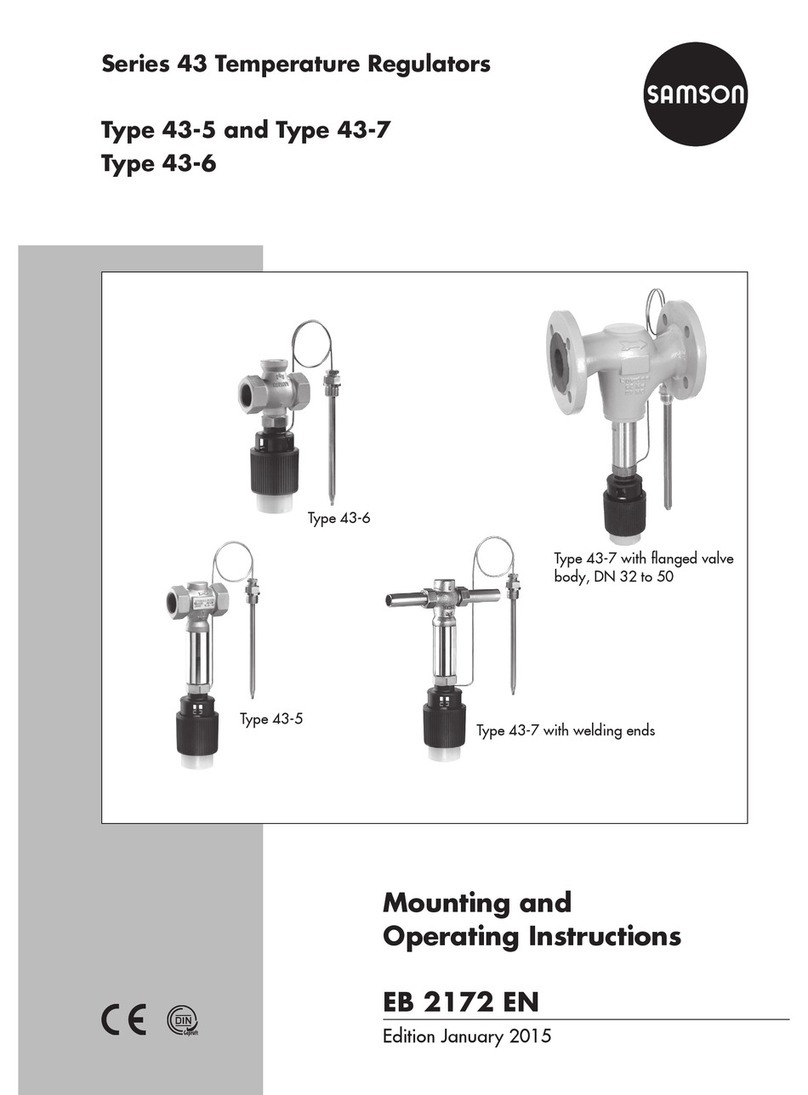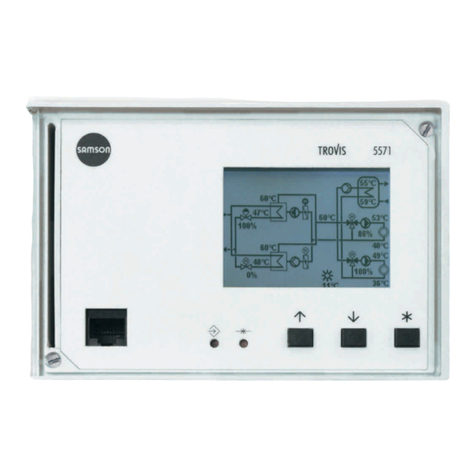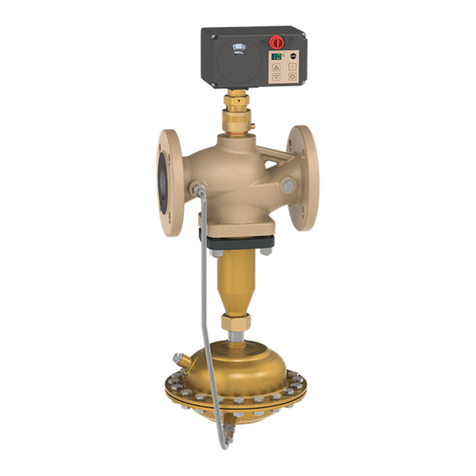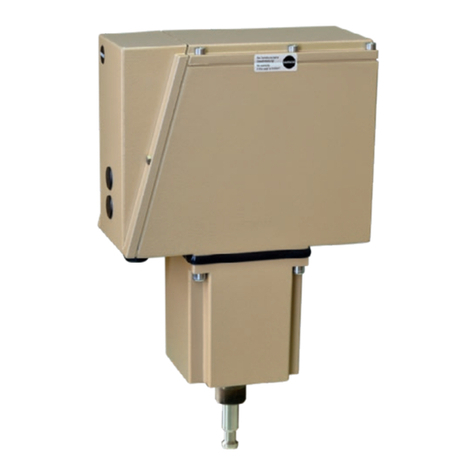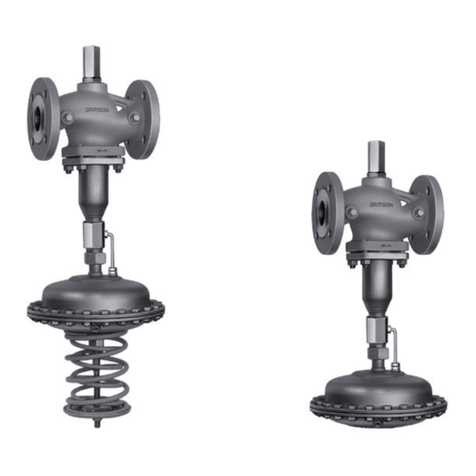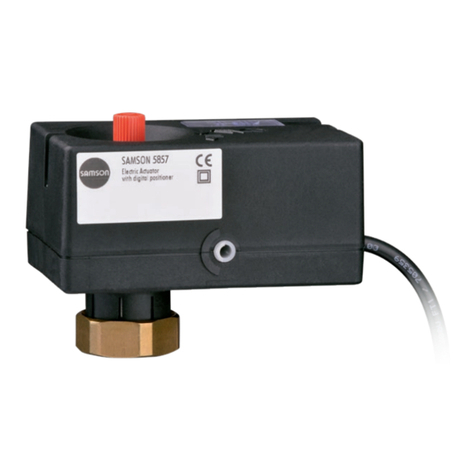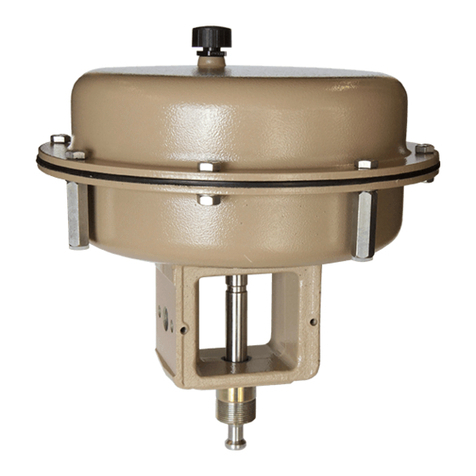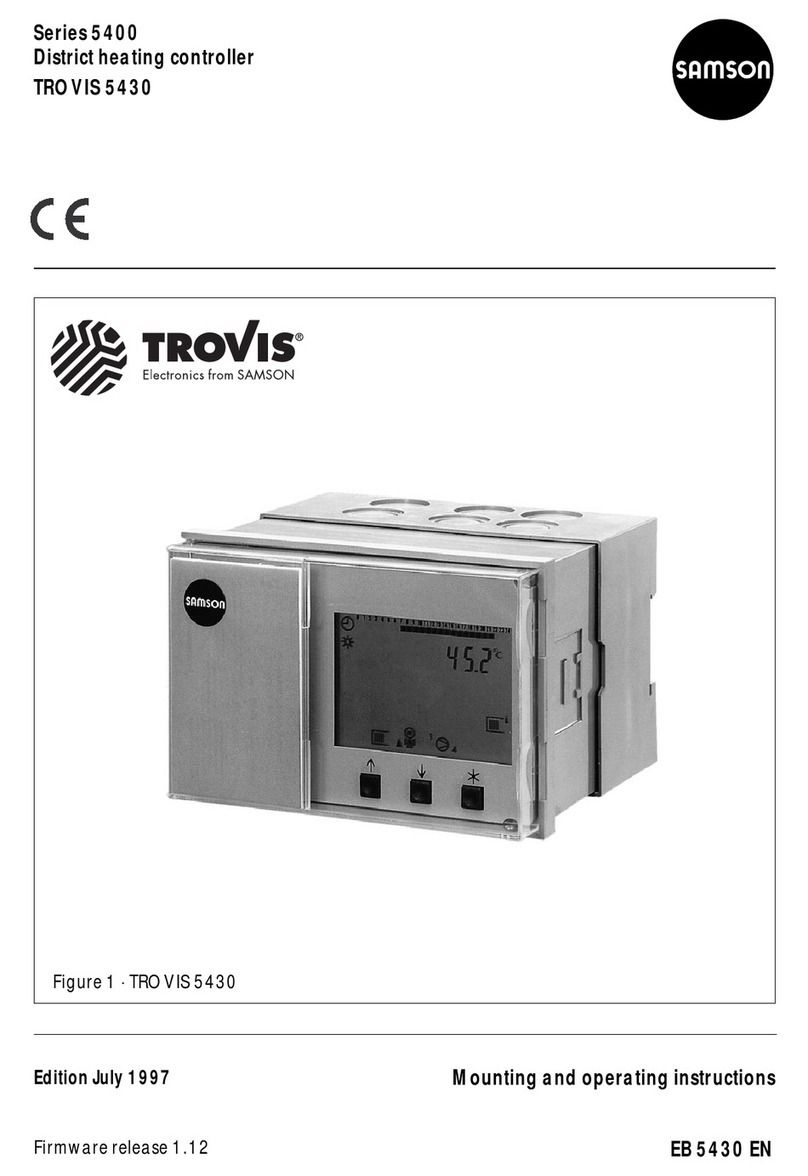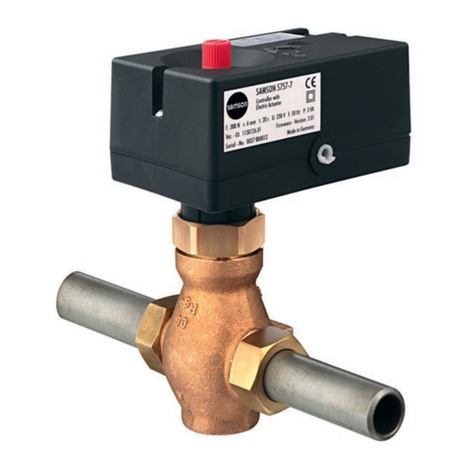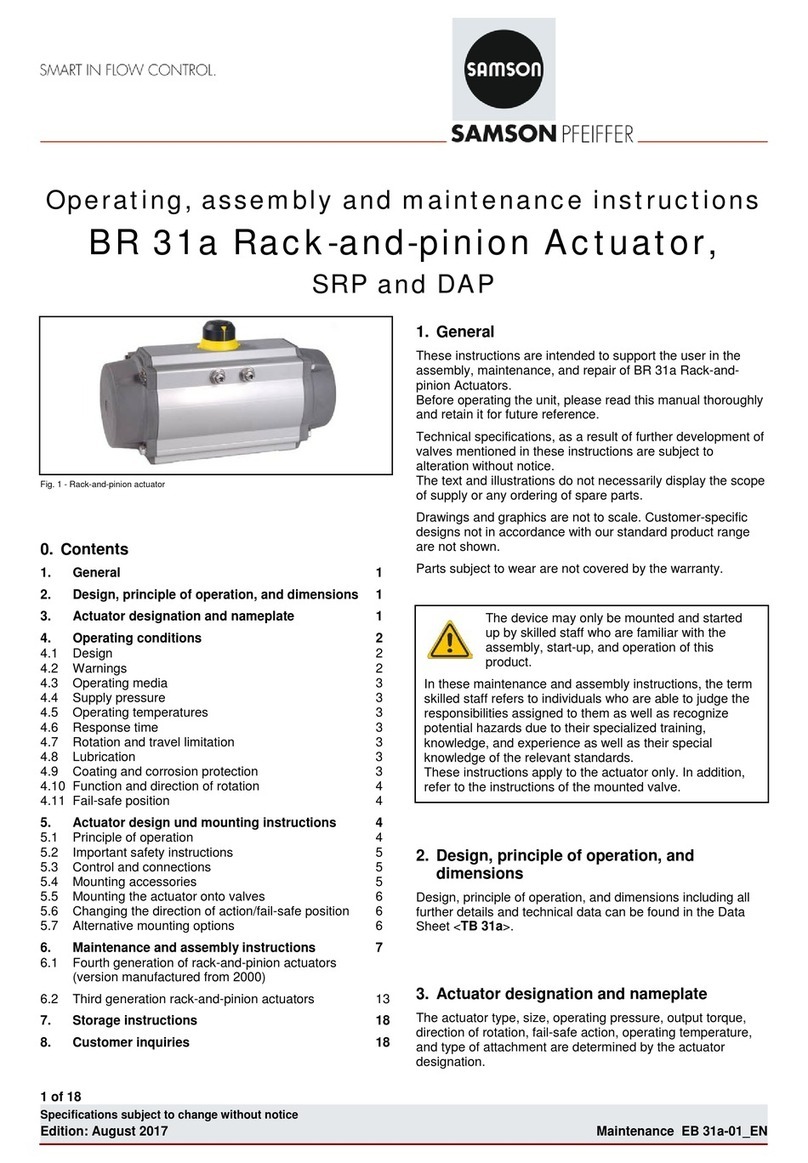
4EB 2559 EN
1 Design and principle of
operation
The pressure regulator is especially designed
for the use in cryogenic service to keep the
pressure constant to the adjusted set point.
The pressure regulator consists of a valve with
three ports A, B and C, a spring-loaded oper-
ating bellows with set point adjuster and a tu-
bular plug.
The pressure regulator operates as a pressure
build-up regulator with safety function when
the direction of flow is from port A to port B.
The valve is open when no pressure is ap-
plied. The pressure downstream of the valve is
transmitted to the operating bellows (4). The
positioning force produced by this pressure
moves the pressure build-up plug (1), which is
firmly attached to the plug sleeve, depending
on the spring force adjustable at the set point
adjuster (6). The valve closes when the pres-
sure downstream of the valve has assumed
the adjusted set point.
Functioning as a pressure build-up regula-
tor, the regulator also operates as a safety
valve for the pressure chamber upstream of
port A. When the pressure rises above the set
point by approx. 5 bar, the positioning force
overcomes the force of the closing spring (8),
causing the pressure build-up plug (1) to
open and the pressure is relieved to ports B
and C.
Functioning as a pressure relief valve, the
medium flows from port B to C. The tubular
plug seals off the operating bellows when
there is no pressure drop across port B and C.
The pressure at port B acts on the operating
bellows (4). The positioning force produced
by this pressure opposes the adjustable
spring force of the set point spring (5) and
opens the tubular plug (2) when the pressure
rises above the set point by approx. 0.5 bar.
The pressures are equalized and the medium
escapes through the inside of the tubular plug
over port C.
As a pressure relief valve, the regulator can
be optionally equipped with a non-return
unit (10). It prevents the medium from flowing
back to port C and allows maintenance work
to be performed on the regulator without hav-
ing to empty the container first.
Design and principle of operation
